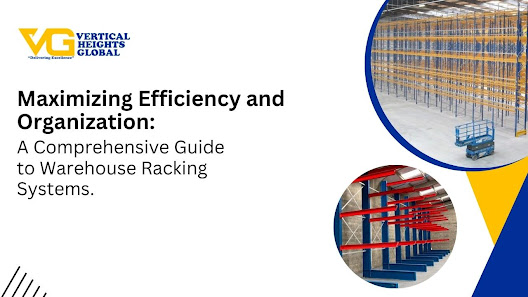In the fast-paced world of logistics and supply chain management, efficient warehousing is the backbone of a successful operation. One key element that plays a pivotal role in achieving optimal efficiency is the warehouse racking system. This article delves into the world of warehouse racking systems, uncovering their importance, types, benefits, and best practices. Whether you're a seasoned logistics professional or just embarking on your journey, this guide will help you make informed decisions about implementing the right racking system for your warehouse.
Understanding the Basics
What Is a Warehouse Racking System?
Before we dive deeper, let's start with the basics. A warehouse racking system is a carefully designed storage solution used in warehouses and distribution centers. Its primary purpose is to maximize vertical space utilization while providing easy access to stored goods. These systems consist of various components, including upright frames, beams, and decking, all tailored to accommodate specific types of goods.
The Significance of Warehouse Racking
Efficient warehouse racking goes beyond merely stacking goods. It can significantly impact your business operations, influencing factors such as storage capacity, accessibility, and overall productivity. When optimized correctly, a warehouse racking system can lead to cost savings and improved customer satisfaction, making it a critical component of your supply chain strategy.
Types of Warehouse Racking Systems
Now that we've established the importance of warehouse racking, let's explore some of the most common types available:
1. Selective Pallet Racking
Selective pallet racking is the go-to choice for many warehouses due to its versatility. It allows for easy access to each pallet, making it suitable for businesses with a variety of product SKUs. This system utilizes vertical space efficiently while ensuring that goods are readily accessible.
2. Drive-In and Drive-Through Racking
Perfect for high-density storage, drive-in, and drive-through racking systems enable forklifts to enter the storage aisles. This setup is ideal for businesses with a large quantity of the same product, reducing the need for multiple access points.
3. Cantilever Racking
Cantilever racking is designed for the storage of long, bulky items such as pipes, lumber, or furniture. It features horizontal arms that extend from vertical columns, allowing for easy loading and unloading of items with varying lengths.
4. Push Back Racking
Push back racking is a high-density solution that utilizes a last-in, first-out (LIFO) storage method. This system is efficient for warehouses with limited space and a high volume of product turnover.
5. Pallet Flow Racking
Pallet flow racking employs gravity to move pallets from the loading end to the unloading end of the rack. It's ideal for first-in, first-out (FIFO) inventory management and is commonly used in temperature-controlled environments.
Benefits of Implementing an Effective Racking System
Now that we've covered the various types of racking systems, let's explore the benefits your business can reap from their implementation:
1. Improved Space Utilization
A well-designed racking system optimizes vertical space, allowing you to store more goods in the same square footage. This not only saves money on facility costs but also enhances your overall storage capacity.
2. Enhanced Accessibility
Efficient racking systems provide easy access to stored goods, reducing the time and effort required for retrieval. This translates to faster order fulfillment and increased customer satisfaction.
3. Safety and Organization
Properly organized racking systems create a safer working environment for warehouse personnel. It reduces the risk of accidents and damage to goods, ultimately saving on insurance and replacement costs.
4. Streamlined Inventory Management
With a well-structured racking system, inventory management becomes more efficient. You can easily track stock levels, conduct regular audits, and minimize the risk of stockouts or overstock situations.
Best Practices for Implementing Warehouse Racking Systems
Implementing a warehouse storage racks requires careful planning and execution. Here are some best practices to consider:
1. Assess Your Needs
Before choosing a racking system, assess your warehouse's specific needs, including the types of goods you handle, their sizes, and your storage requirements.
2. Safety First
Prioritize safety by ensuring that the racking system is installed correctly and that warehouse staff are trained in its safe operation.
3. Regular Maintenance
Establish a routine maintenance schedule to inspect and maintain your racking system. This proactive approach can prevent costly damage and ensure longevity.
4. Stay Flexible
Design your racking system with scalability in mind. As your business grows, the system should accommodate changes in inventory size and volume.
Conclusion
In conclusion, a well-planned and executed warehouse rack and shelf is the cornerstone of an efficient and organized warehouse operation. By choosing the right type of racking, reaping the benefits of improved space utilization, accessibility, safety, and streamlined inventory management, and adhering to best practices, you can take your logistics and supply chain management to new heights. Remember, the key to success lies in optimizing your warehouse racking system to meet the unique needs of your business.
Read more about our other products




